Signs of Nature
Signs of Nature
I’ve wandered the sandy paths of Bridgewater Bay since I was six years old. Each summer school holidays, scorching sand sent us sprinting into the white, foamy waves lest we burn our young feet. I recall winter evenings spent listening to the crash of waves from my bedroom window and most recently, driving back and forth between there and Melbourne when I worked at the local bookshop.
There are so many things that are memorable about Victoria’s Mornington Peninsula, many of which can be found up the end of the dirt road that leads from my family’s holiday house down to Bridgewater Bay, the Blairgowrie surf beach. There’s the exact spot at The Lookout from where you can spy Bass Strait, Port Phillip Bay, and the southern fence of our red-brick house with just one quick swivel of your head; there’s the ‘bridge’ itself, a popular swimming spot due to the almost dream-like rockpool of deep turquoise and a perfectly formed cliff from which daredevils and show-offs tumble into the water below; there’s the quiet twitter of scrubwrens amongst the salt-blown vegetation. These things matter to me.
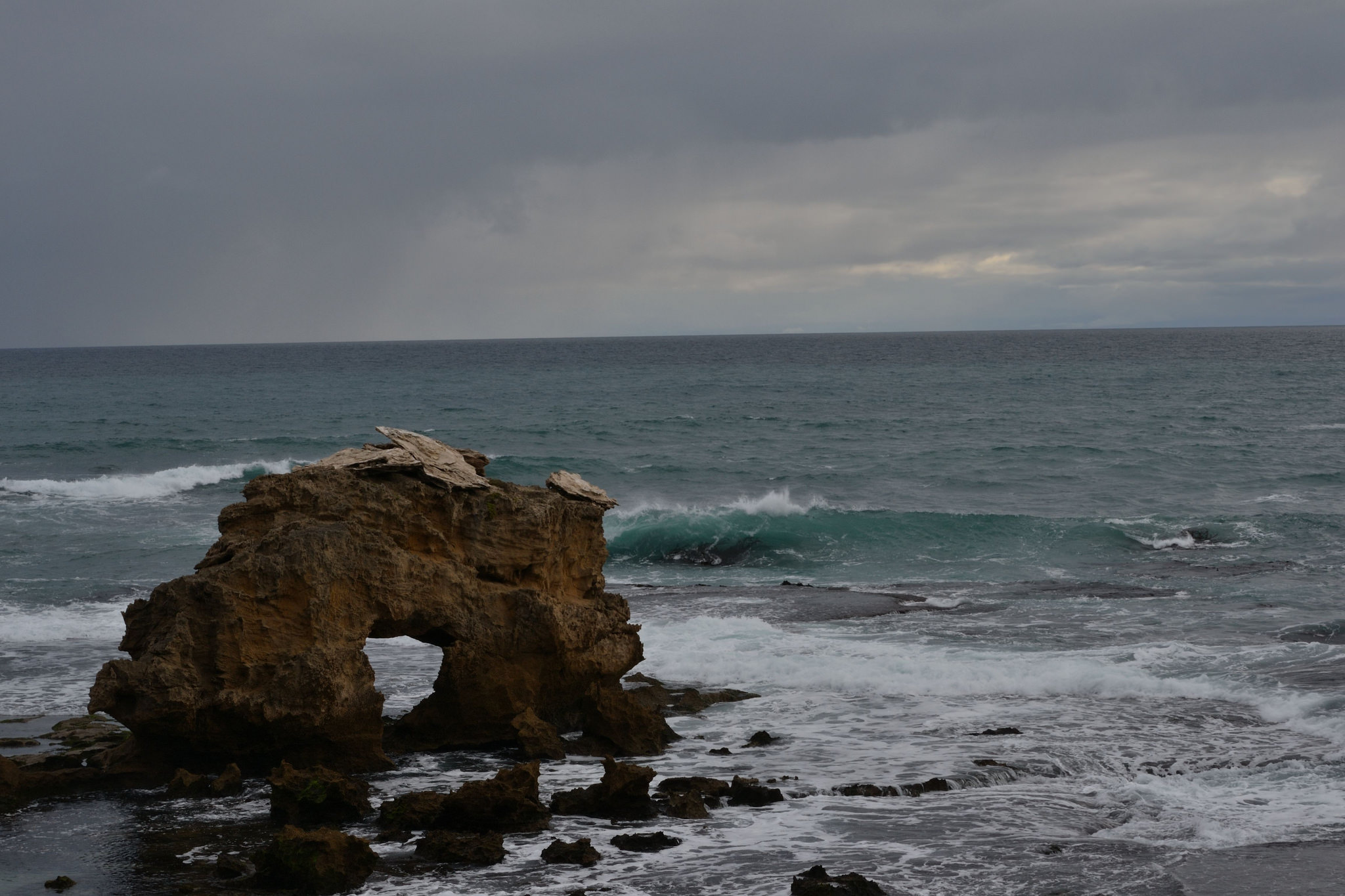
Image: J Borrett
I know so much of it, it’s hard to be convinced that there are probably spaces along there I will never get time to explore. The signs installed by Parks Victoria that direct walkers along different paths and to different beaches no longer direct me – I know the way so well. Yet there was a time when my family and I were discovering the area for the first time – and these signs helped us understand and appreciate the layout of this coastal park. Even the small wooden blocks inserted into the salty soil with the distinctive orange arrow attached, familiar to so many who have visited Victoria’s parks, provide a simple message: continue this way.
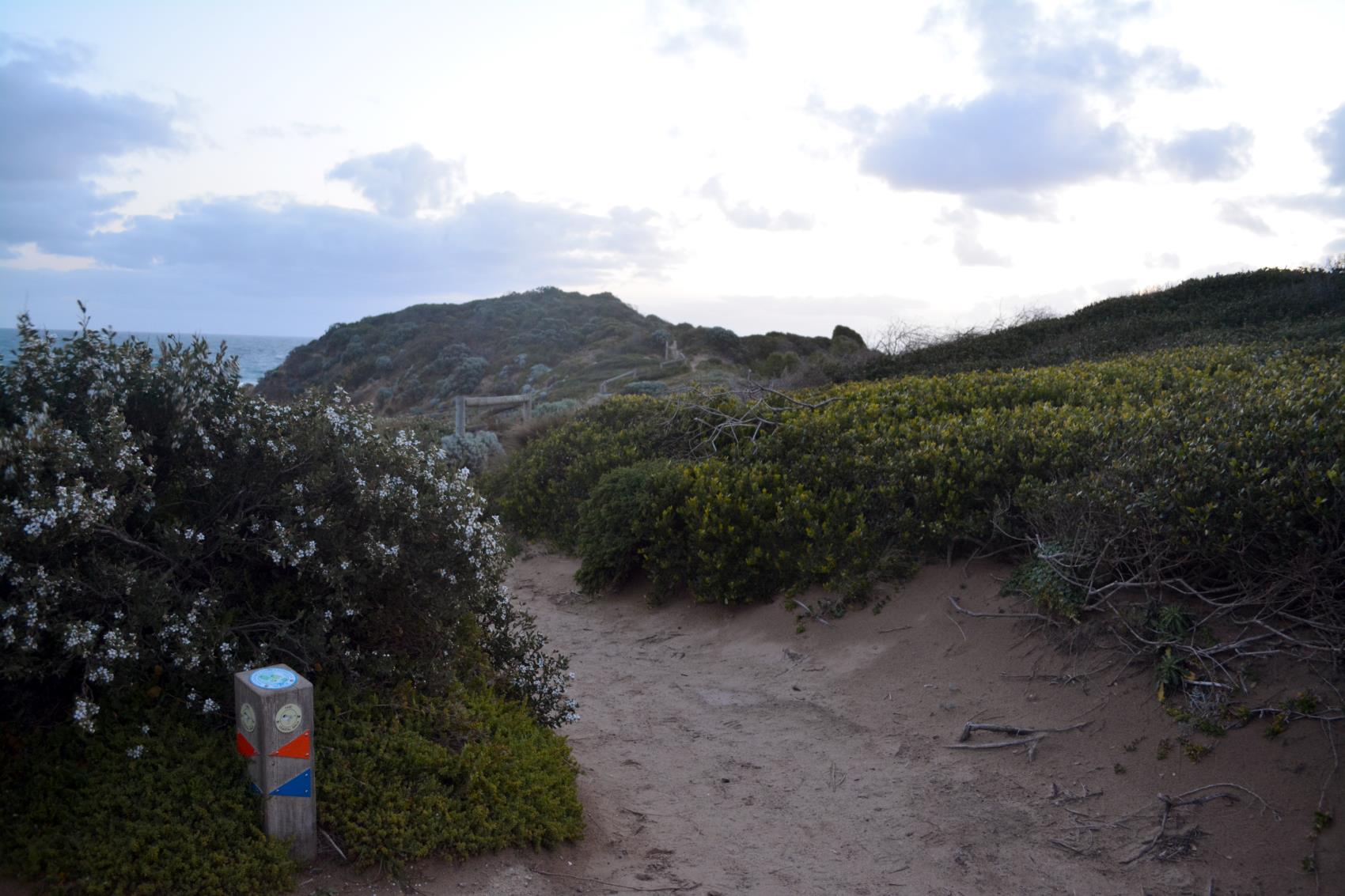
Image: Rachel Fetherston
We are led by signage in our day-to-day lives: street signs, stop signs, signs telling us to buy this or do that. More than ever before, signs also direct us through nature and educate us about what can be found in the habitats that surround us. When once we might have found our way using familiar sights in nature, now wooden signs have replaced that tea-tree bent at a particular angle, the sand dune to my right, the swirling chaos of rumbling waves to my left. Most of us rely on signage to tell us how to experience nature and what direction we should be going, so the idea that such signs could influence our perception of the environment is not surprising.
But although we need signage to help educate and engage, we also need it to encourage us to step away from the typeface, and explore. In my work for Wild Melbourne – a nature engagement charity that brings Victorians to nature, and nature to them – I’ve spent time formulating and writing the text for signage that informs the public what can be found on the shores of Point Leo, a small town on Western Port Bay that is one of many locations in the surrounding area frequented by campers, beachgoers and nature enthusiasts. The large signs we’ve installed are less directional and more educational, and yet it can still be said that the small, wooden posts that direct us along the beach trails also provide a certain education regarding the surrounding environment: this way to the beach, this way to the carpark, this way to the track that takes you through the dark tunnel of tea-trees, reaching over one another like they’re trying to touch leaves with their kin on the other side of the path.
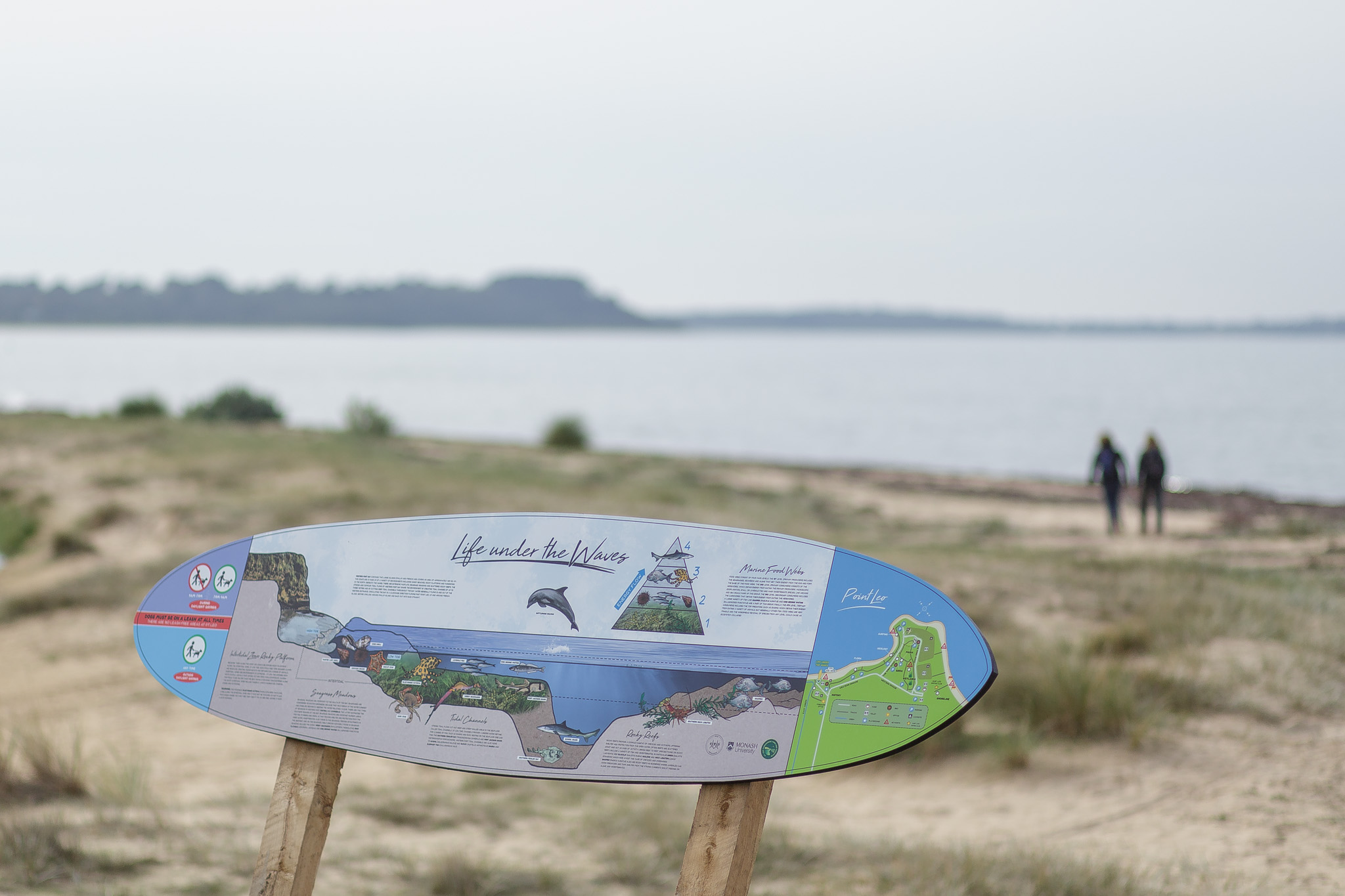
Image: Robert Geary
There is so much to explore, and signage can help both visitors and locals do this. But what I hope most is that it encourages people to leave the beaten track and see what nature has to offer, on a more personal level. Nature is, after all, not just what ecologists and poets tell us it is, but rather what we make of it ourselves. During a time of so much environmental change, resulting largely from human impact, I find myself reflecting on how anthropogenic structures – such as wooden signage – can instead benefit local green spaces rather than intrude on them. In an area like Blairgowrie where one of the biggest threats is overdevelopment, this idea is more important than ever. How can we use infrastructure to encourage visitors to understand aspects of the local natural areas that they frequent, in turn inspiring greater protection of them?
Another major threat to many coastal areas around Australia, including Blairgowrie, is erosion, with the invasive marram grass being introduced in the 19th Century to combat the problem. Wherever European colonialists settled, marram grass often wasn’t far behind. However, its introduction has since resulted in devastating changes to coastal landscapes due to its ability to create steep dunes which are, ironically, incredibly prone to wave erosion. It is interesting to think that up until recently, I viewed this plant as a native species – aesthetically, it seemed to fit in so well with the Victorian coastal environment. But my perception is undeniably warped – what I’m accustomed to viewing along the coast of the Mornington Peninsula is no doubt vastly different to how it would have appeared before European settlement, and yet I once perceived it as ‘natural’. My education in science and my work with local communities have taught me that seeing is not necessarily believing, because so many of our native habitats are not even close to what they used to be, aesthetically or functionally.
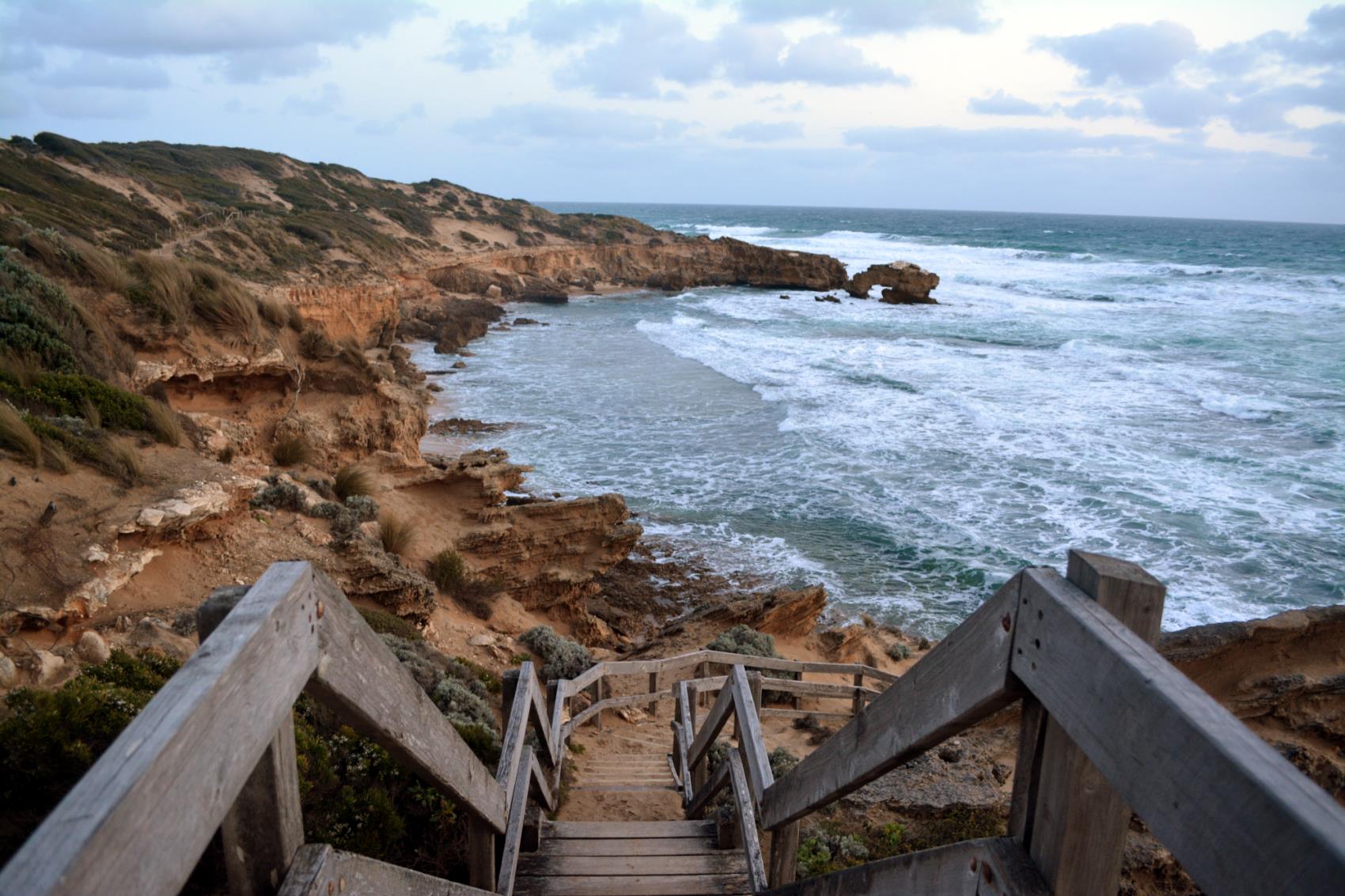
Image: Rachel Fetherston
The signs that once told visitors the way to Bridgewater now also play a role in informing them that dogs are no longer allowed within any area of the Mornington Peninsula National Park. A welcome decision in my eyes, as well as for many local nature lovers – especially the hooded plover enthusiasts who deal primarily with dogs (and humans) trampling this endangered bird’s nests. However, it is interesting (or infuriating, depending on how you look at it) to see the passion behind the people angered by this new rule – ‘No Dog’ signs are scribbled over with permanent marker, some even graffitied with locals’ thoughts on the matter. It makes me wonder what could be possible if these people felt the same need to defend the native animals and natural areas so vehemently. And yet the public outcry also demonstrates some kind of defence of time spent in natural places – people are saying, ‘I love to walk my dog here‘. On some level, it is special to them and they are sad to spend less time there.
Whilst climate change and other large-scale disruptions to the Australian environment are the focus of so much political and scientific attention, I like to remember the little things about nature, in particular Blairgowrie – not just the seemingly negative restrictions, like walking your dog only where it is permitted, keeping your cat inside, or avoiding strolling too close to a plover nest, but the positive aspects as well. For me, it’s the memorable family holidays spent splashing at the beach; the exploratory strolls along an untrodden trail; the foraging echidna seen rustling in the coastal undergrowth; the magnificent osprey drifting on the pelagic winds; the signage that reminds me to take a left turn off the Lifesaving Track onto the Circuit Walk, directing me through the lush coastal vegetation to the sublime cliffs facing the biting winds of Bass Strait.
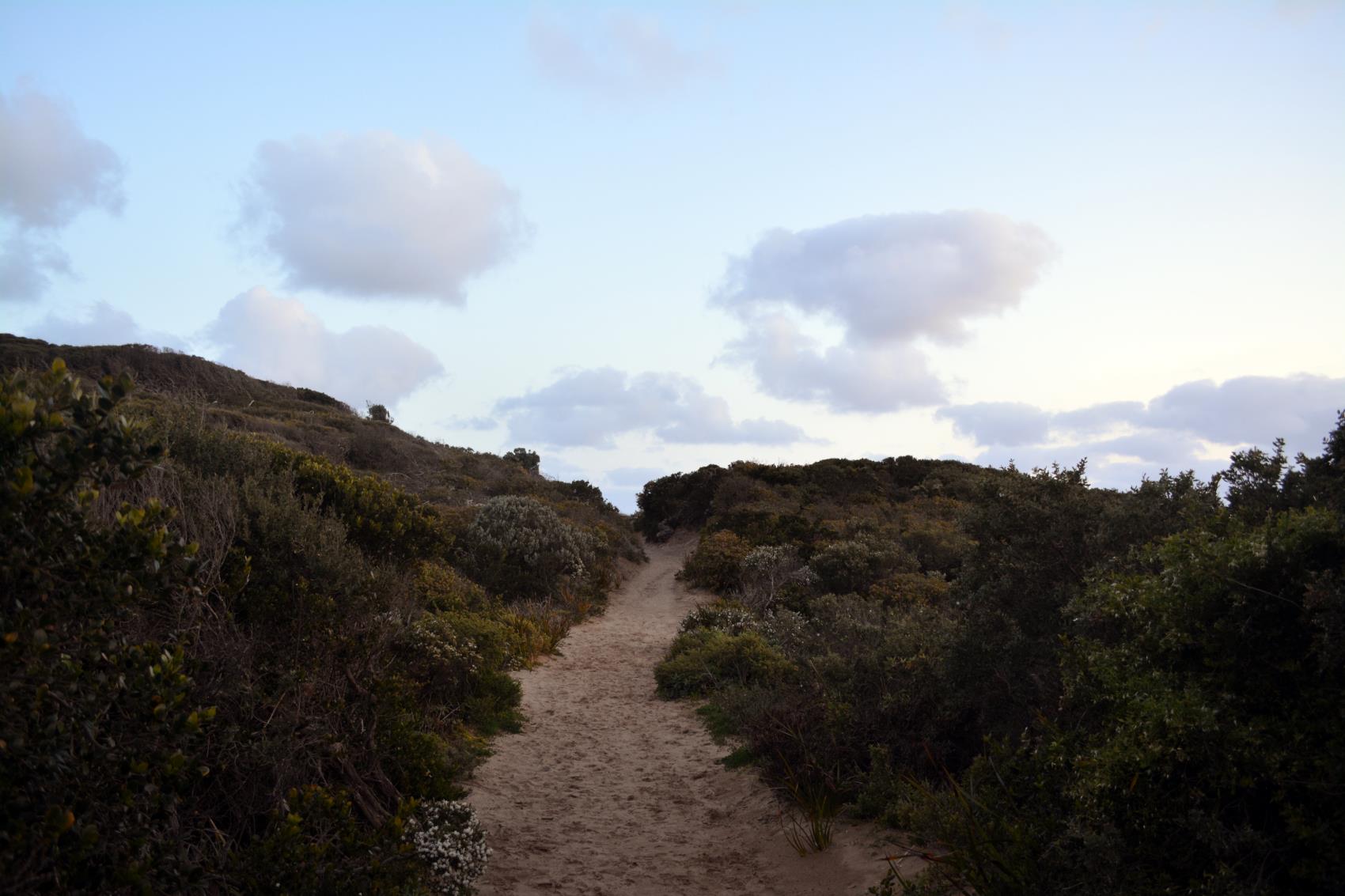
Image: Rachel Fetherston
Signs can aggressively direct the viewer to do something, or they can gently encourage them to try something different – in this case, not a human-made product or service, but rather the wonders of the natural world. Whilst overdevelopment can be so damaging to coastal habitats, it is comforting to know that some forms of human infrastructure may lead to more positive experiences in our natural world.
Rachel Fetherston is a co-founder and the publications manager of the non-profit, nature engagement agency, Wild Melbourne.
Website: http://wildmelbourne.org
Facebook: https://www.facebook.com/WildMelbourne/
Twitter: https://twitter.com/WildMelbourne



